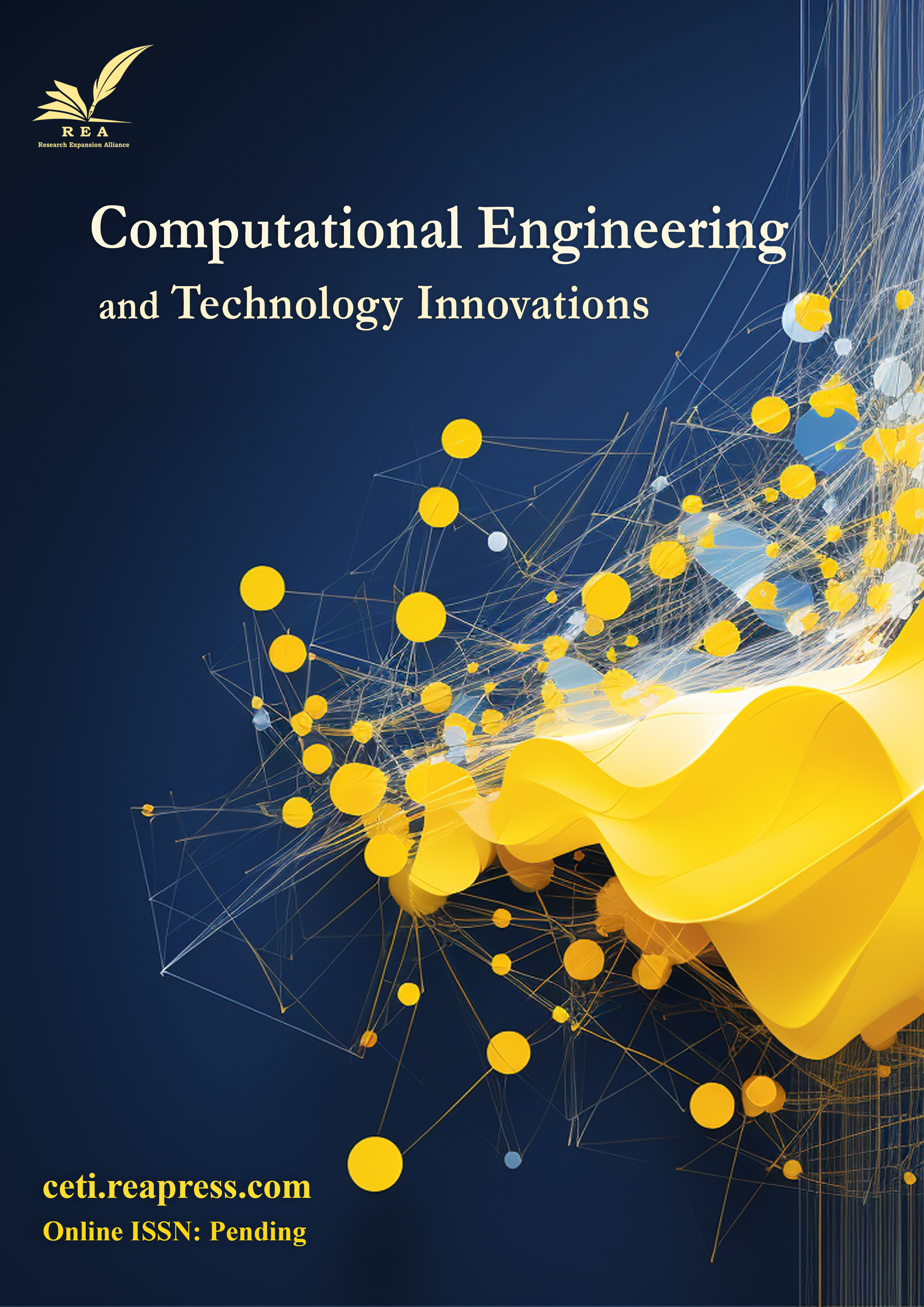Hybrid FCNN-LSTM Approach for Autism Spectrum Disorder Classification
Abstract
Several symptoms can be observed to detect a complicated Neuro Developmental Disorder (NDD) named Autism Spectrum Disorder (ASD). The social interactions, behaviour, and communication were greatly impacted by this disease. Early Detection (ED) of the disease will facilitate in effective treatment, so this ED is crucial. Here, the conventional methods face difficulty, because it depends on expert evaluations. These expert evaluations are subjective and time-consuming. These conventional ASD diagnostic methods are manual, subjective and suspectible to inconsistencies. The development of reliable treatment ways is further complicated, because these methods are slow and it may generate unreliable diagnosis. The complexity and variability of the ASD symptoms are not effectively captured by the current Machine Learning (ML) methods. This will result in inaccurate predictions. For ASD classification, a Hybrid Fuzzy CNN-LSTM approach was suggested for resolving those limitations. Data preprocessing is the initial process in this method, as it includes Noise Reduction (NR) and normalization. Thus high-quality inputs were also ensured. Then, the spatial patterns in data can be detected by employing Convolutional Neural Networks (CNN), and it can be used for performing Feature Extraction (FE). Here, these features are then fed into an Long Short-Term Memory (LSTM) network for detecting temporal relations. Also, Fuzzy Logic (FL) was also employed in this study, and it facilitate in managing the ASD data’s uncertainty and unpredictability. At last, the accuracy and accessibility was improved. The spatial analysis, temporal analysis, large data management of FL are collaborated, and these collaboration facilitates the hybrid model in enhancing the classification performance. Diabetes datasets usually include patient data with diagnostic characteristics linked to ASD, such as social interaction, behavioural, and communication metrics. Following metrics like Accuracy (Acc) , Precision (P), and Recall (R) were utilized for assessing the suggested model. From the outcomes of the simulation, it is clear that the suggested Hybrid Fuzzy CNN-LSTM model performs better than the current ML methods in terms of performance metrics. Thus, an improved diagnostic accuracy of ASD was attained.
Keywords:
Autism spectrum disorder, Hybrid FCNN-LSTM, Deep learning, Convolutional neural networks, Long short-term memory, Multimodal data, ASD diagnosis, Neurodevelopmental disorders, Machine learning, Temporal sequence modelingReferences
- [1] Eslami, T., Almuqhim, F., Raiker, J. S., & Saeed, F. (2021). Machine learning methods for diagnosing autism spectrum disorder and attention- deficit/hyperactivity disorder using functional and structural MRI: A survey. Frontiers in neuroinformatics, 14, 575999. https://doi.org/10.3389/fninf.2020.575999
- [2] Firouzi, M. H., & Fadaei, S. (2025). Deep learning-based classification of autism spectrum disorder using resting state fMRI data. International journal of engineering, 38(4), 785–795. https://doi.org/10.5829/ije.2025.38.04a.10
- [3] Plis, S. M., Hjelm, D. R., Salakhutdinov, R., Allen, E. A., Bockholt, H. J., Long, J. D., … & Calhoun, V. D. (2014). Deep learning for neuroimaging: A validation study. Frontiers in neuroscience, 8, 229. https://doi.org/10.3389/fnins.2014.00229
- [4] Hossain, K. M., Islam, M. A., Hossain, S., Nijholt, A., & Ahad, M. A. R. (2023). Status of deep learning for EEG-based brain–computer interface applications. Frontiers in computational neuroscience, 16, 1006763. https://doi.org/10.3389/fncom.2022.1006763
- [5] Wang, Z., Liu, J., Zhang, W., Nie, W., & Liu, H. (2022). Diagnosis and Intervention for children with autism spectrum disorder: A survey. IEEE transactions on cognitive and developmental systems, 14(3), 819–832. https://doi.org/10.1109/TCDS.2021.3093040
- [6] Sherkatghanad, Z., Akhondzadeh, M., Salari, S., Zomorodi-Moghadam, M., Abdar, M., Acharya, U. R., … & Salari, V. (2020). Automated detection of autism spectrum disorder using a convolutional neural network. Frontiers in neuroscience, 13, 1325. https://doi.org/10.3389/fnins.2019.01325
- [7] Xu, Y., Yu, Z., Li, Y., Liu, Y., Li, Y., & Wang, Y. (2024). Autism spectrum disorder diagnosis with EEG signals using time series maps of brain functional connectivity and a combined CNN–LSTM model. Computer methods and programs in biomedicine, 250, 108196. https://doi.org/10.1016/j.cmpb.2024.108196
- [8] Xu, M., Calhoun, V., Jiang, R., Yan, W., & Sui, J. (2021). Brain imaging-based machine learning in autism spectrum disorder: methods and applications. Journal of neuroscience methods, 361, 109271. https://doi.org/10.1016/j.jneumeth.2021.109271
- [9] Huang, Z. A., Zhu, Z., Yau, C. H., & Tan, K. C. (2021). Identifying autism spectrum disorder from resting-state fMRI using deep belief network. IEEE transactions on neural networks and learning systems, 32(7), 2847–2861. https://doi.org/10.1109/TNNLS.2020.3007943
- [10] Sha, M., Al-Dossary, H., & Rahamathulla, M. P. (2025). Multimodal data fusion framework for early prediction of autism spectrum disorder. Human behavior and emerging technologies, 2025(1), 1496105. https://doi.org/10.1155/hbe2/1496105
- [11] Rakić, M., Cabezas, M., Kushibar, K., Oliver, A., & Lladó, X. (2020). Improving the detection of autism spectrum disorder by combining structural and functional MRI information. NeuroImage: clinical, 25, 102181. https://doi.org/10.1016/j.nicl.2020.102181
- [12] Liu, M., Li, B., & Hu, D. (2021). Autism spectrum disorder studies using fMRI data and machine learning: A review. Frontiers in neuroscience, 15, 697870. https://doi.org/10.3389/fnins.2021.697870
- [13] Baygin, M., Dogan, S., Tuncer, T., Datta Barua, P., Faust, O., Arunkumar, N., … & Rajendra Acharya, U. (2021). Automated ASD detection using hybrid deep lightweight features extracted from EEG signals. Computers in biology and medicine, 134, 104548. https://doi.org/10.1016/j.compbiomed.2021.104548
- [14] Heinsfeld, A. S., Franco, A. R., Craddock, R. C., Buchweitz, A., & Meneguzzi, F. (2018). Identification of autism spectrum disorder using deep learning and the ABIDE dataset. NeuroImage: clinical, 17, 16–23. https://doi.org/10.1016/j.nicl.2017.08.017
- [15] Sharma, A., & Tanwar, P. (2024). Autism spectrum disorder prediction system using machine learning and deep learning. International journal of applied systemic studies, 11(2), 159–173. https://doi.org/10.1504/IJASS.2024.140025
- [16] Han, J., Jiang, G., Ouyang, G., & Li, X. (2022). A multimodal approach for identifying autism spectrum disorders in children. IEEE transactions on neural systems and rehabilitation engineering, 30, 2003–2011. https://doi.org/10.1109/TNSRE.2022.3192431
- [17] Yin, W., Mostafa, S., & Wu, F. X. (2021). Diagnosis of autism spectrum disorder based on functional brain networks with deep learning. Journal of computational biology, 28(2), 146–165. https://doi.org/10.1089/cmb.2020.0252
- [18] Manoj, M., & Praveen, J. I. R. (2023). A hybrid approach to support the detection of autism spectrum disorder(asd) through machine learning and deep learning techniques. 2023 12th International Conference on Advanced Computing (ICoAC) (pp. 1-7). IEEE. https://doi.org/10.1109/ICoAC59537.2023.10249962
- [19] Santana, A. N., Cifre, I., de Santana, C. N., & Montoya, P. (2019). Using deep learning and resting-state fMRI to classify chronic pain conditions. Frontiers in neuroscience, 13, 1313. https://doi.org/10.3389/fnins.2019.01313
- [20] Saleh, A. Y., & Chern, L. H. (2021). Autism spectrum disorder classification using deep learning. International journal of online & biomedical engineering, 17(8). https://doi.org/10.3991/ijoe.v17i08.24603
- [21] Deng, J., Hasan, M. R., Mahmud, M., Hasan, M. M., Ahmed, K. A., & Hossain, M. Z. (2022). Diagnosing autism spectrum disorder using ensemble 3d-cnn: a preliminary study. 2022 IEEE international conference on image processing (ICIP) (pp. 3480–3484). IEEE. https://doi.org/10.1109/ICIP46576.2022.9897628
- [22] Ali, N. A., Syafeeza, A. R., Jaafar, A. S., Shamsuddin, S., & Nor, N. K. (2021). LSTM-based electroencephalogram classification on autism spectrum disorder. International journal of integrated engineering, 13(6), 321–329. https://doi.org/10.30880/ijie.13.06.028
- [23] Bayram, M. A., Özer, İ., & Temurtaş, F. (2021). Deep learning methods for autism spectrum disorder diagnosis based on fMRI images. Sakarya university journal of computer and information sciences, 4(1), 142–155. https://doi.org/10.35377/saucis.04.01.879735
- [24] Alam, S., Raja, S. P., Gulzar, Y., & Mir, M. S. (2023). Enhancing autism severity classification: integrating LSTM into CNNs for multisite meltdown grading. International journal of advanced computer science and applications, 14(12), 670–677. https://doi.org/10.14569/IJACSA.2023.0141269
- [25] Kurniawan, W. Y., & Gunawan, P. H. (2024). Classification of autism spectrum disorder based on facial images using the VGG19 algorithm. Journal of computing science and engineering, 18(1), 1–9. https://doi.org/10.5626/JCSE.2024.18.1.1
- [26] Nandhini, K., & Tamilpavai, G. (2022). Hybrid CNN-LSTM and modified wild horse herd model-based prediction of genome sequences for genetic disorders. Biomedical signal processing and control, 78, 103840. https://doi.org/10.1016/j.bspc.2022.103840
- [27] Khodatars, M., Shoeibi, A., Sadeghi, D., Ghaasemi, N., Jafari, M., Moridian, P., … & Berk, M. (2021). Deep learning for neuroimaging-based diagnosis and rehabilitation of autism spectrum disorder: A review. Computers in biology and medicine, 139, 104949. https://doi.org/10.1016/j.compbiomed.2021.104949
- [28] Esqueda-Elizondo, J. J., Juárez-Ramírez, R., López-Bonilla, O. R., García-Guerrero, E. E., Galindo-Aldana, G. M., Jiménez-Beristáin, L., … & Inzunza-González, E. (2022). Attention measurement of an autism spectrum disorder user using EEG signals: A case study. Mathematical and computational applications, 27(2), 21. https://doi.org/10.3390/mca27020021
- [29] Li, J., Kong, X., Sun, L., Chen, X., Ouyang, G., Li, X., & Chen, S. (2024). Identification of autism spectrum disorder based on electroencephalography: A systematic review. Computers in biology and medicine, 170, 108075. https://doi.org/10.1016/j.compbiomed.2024.108075
- [30] Tawhid, N. A. (2023). Automatic detection of neurological disorders using brain signal data. [Thesis]. https://B2n.ir/qt1690
- [31] Montassar, I., Chikhaoui, B., & Wang, S. (2023). Agitated behaviors detection in children with asd using wearable data. Lecture notes in computer science (including subseries lecture notes in artificial intelligence and lecture notes in bioinformatics). (pp. 92–103). Springer. https://doi.org/10.1007/978-3-031-43950-6_8


